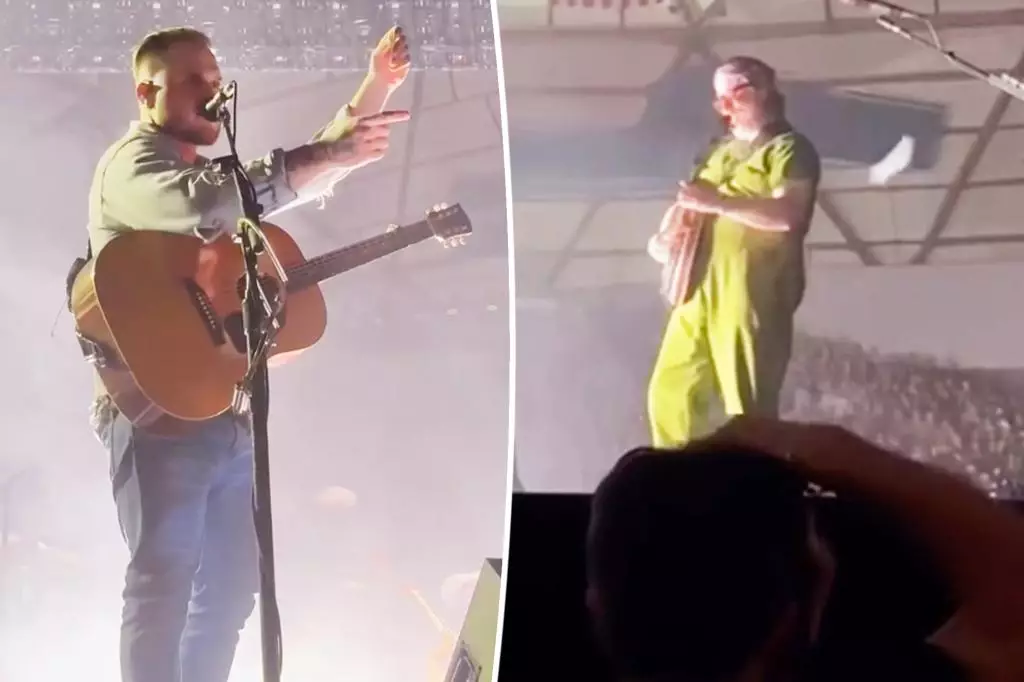Concerts serve as a thrilling avenue for artists to connect with their fans, encapsulating the euphoria of live music. However, as enjoyable as these events can be, they also invite their fair share of chaos. In recent years, the trend of fans throwing items on stage has sparked significant controversy. This was vividly highlighted during a recent concert by country musician Zach Bryan, where an errant object led to intense player-audience confrontation.
During his performance at the Tacoma Dome in Washington, Zach Bryan faced an unexpected disruption when a fan threw an object that struck one of his band members. Immediately recognizing the breach of etiquette, Bryan halted the concert to confront the individual responsible. His exasperation was evident as he questioned the crowd, demanding to know who was accountable for throwing the item. A notable aspect of his reaction included an emphatic “Don’t throw s–t at concerts!” This direct engagement revealed the tension that can arise in the live music environment when personal safety and respect are compromised.
Bryan’s actions went beyond a mere reprimand; he expressed a clear intent to identify the perpetrator, suggesting an immediate ejection from the venue. His determination to uphold decorum highlights a broader issue affecting the concert scene today—how fans often blur the lines between engagement and irresponsibility.
Bryan’s unpleasant experience is unfortunately not unique. A troubling pattern has emerged in the entertainment industry, where artists are routinely subjected to dangerous behavior from the audience. Notable instances in recent history include situations involving other celebrities like Pink, Drake, and Bebe Rexha, each of whom has had objects—be it vapes or even ashes—thrown at them during performances. These dangerous incidents raise critical questions about crowd control and safety protocols at concerts.
Concerts should be arenas of joy and creative expression, not sites of potential harm. Fans should not treat the stage as a target for their misplaced enthusiasm. Consequently, venues and organizers must prioritize crowd safety, implementing stricter regulations to mitigate these occurrences.
Adding complexity to Bryan’s concert experience, he’s currently amid personal upheaval, having recently confirmed a breakup with his ex-girlfriend, Brianna “Chickenfry” LaPaglia. This revelation further amplified the risks associated with concert performances, as the emotional state of an artist can significantly influence their reaction to unexpected situations on stage. The fallout from his breakup is still unfolding, with LaPaglia alleging emotional abuse during their relationship. While Bryan has yet to publicly address these allegations, the combination of personal challenges and professional responsibilities undoubtedly adds to the pressure he faces on stage.
Such dynamics remind us that artists are not merely performers; they are individuals dealing with human emotions. The context in which they operate can greatly affect their interactions with fans and how they handle incidents that escalate during performances.
As fans, it’s imperative to remember that our actions have consequences. The adrenaline of a live performance can lead to impulsive decisions, but we must remain mindful of the performers and those around us. Zach Bryan’s response serves as a critical reminder: concerts are a shared experience, and respect should always be at the forefront of fandom culture.
As the music industry continues to evolve, so too must the understanding of how audiences interact with artists. While the allure of live concerts will always attract enthusiastic fans, we must redefine our understanding of engagement to ensure that the thrill of the performance does not come at the expense of safety and respect. In that shared space of creativity, let us commit to creating an environment that allows everyone, including artists, to thrive without fear of reckless behavior from the audience.

